40+ Sample Cost Proposal
-
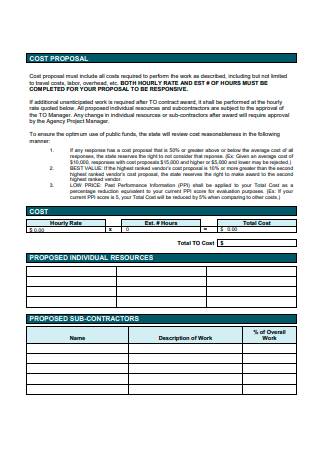
Cost Proposal Template
download now -
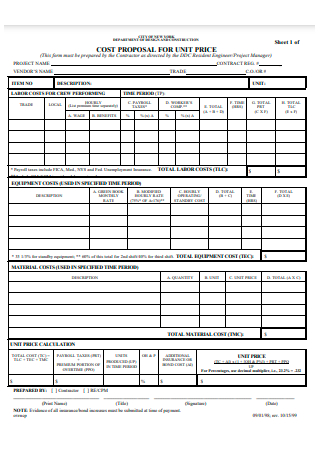
Cost Proposal For Unit Price
download now -
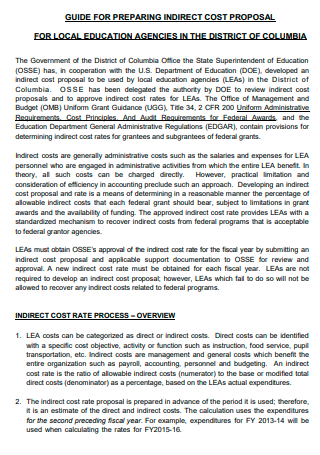
Indirect Cost Proposal
download now -
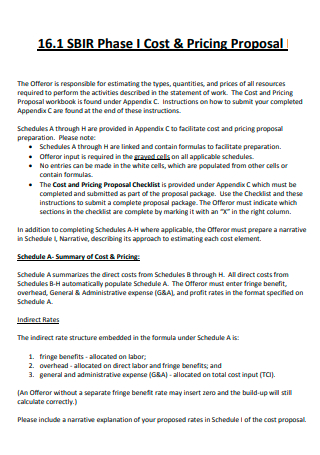
Cost and Pricing Proposal
download now -
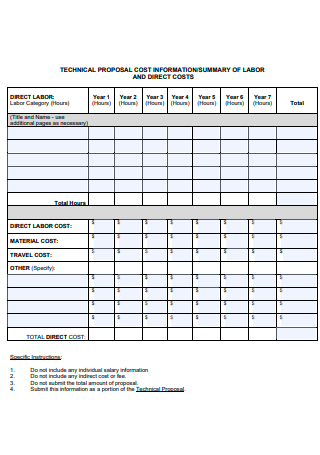
Labor and Direct Cost Technical Proposal
download now -
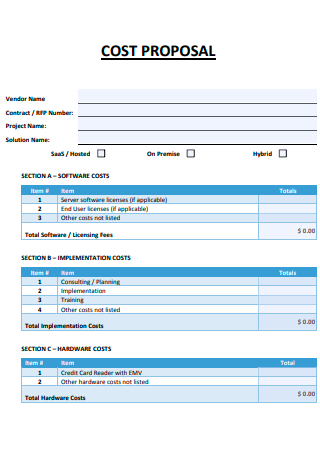
Basic Cost Proposal
download now -
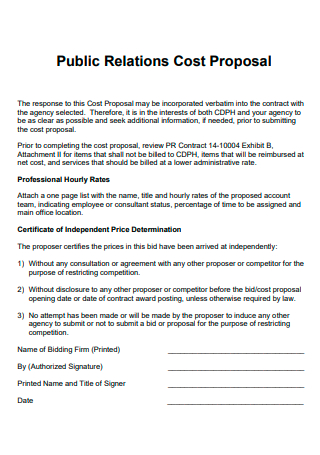
Public Relations Cost Proposal
download now -
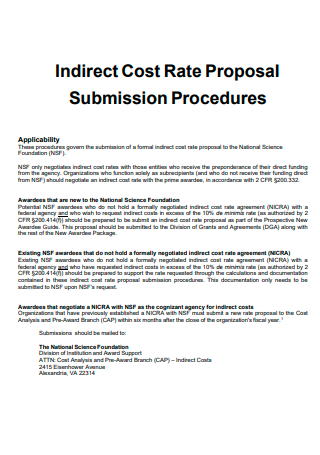
Indirect Cost Rate Proposal Submission Procedures
download now -
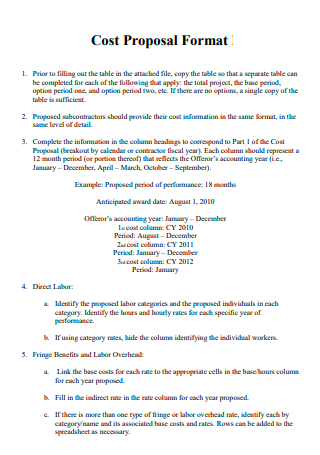
Cost Proposal Format
download now -
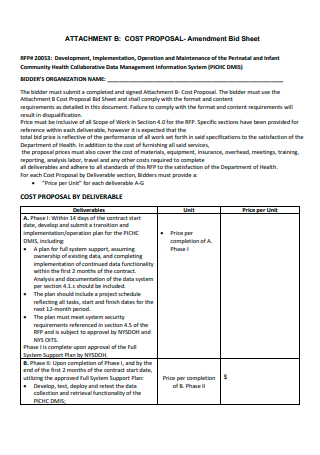
Cost Proposal Amendment Bid Sheet
download now -
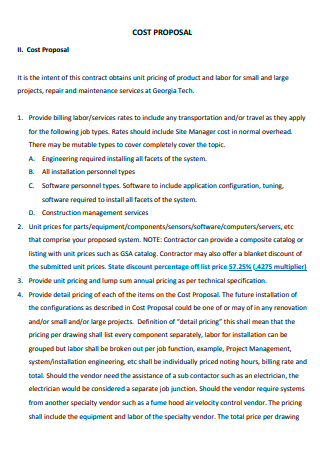
Cost Proposal in PDF
download now -
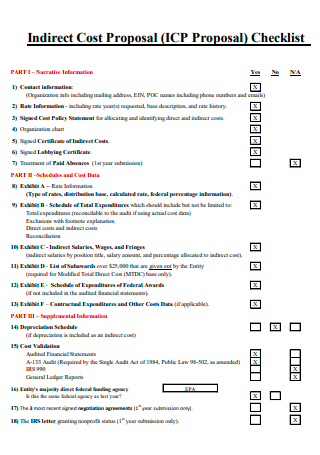
Indirect Cost Proposal Checklist
download now -

Cost Proposal Form
download now -
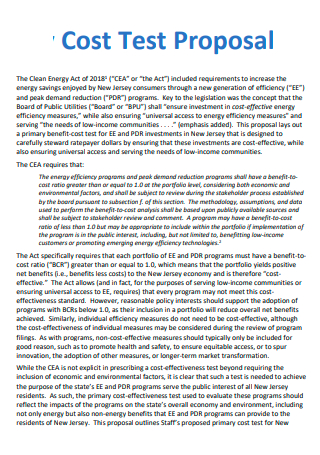
Cost Test Proposal
download now -

Cost Proposal Assistance
download now -
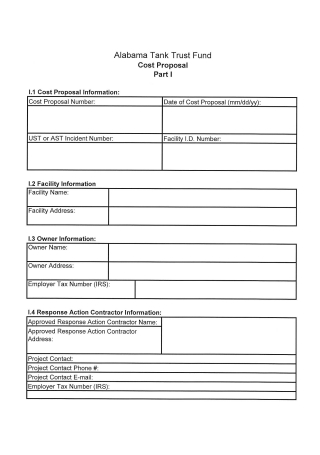
Tank Trust Fund Cost Proposal
download now -
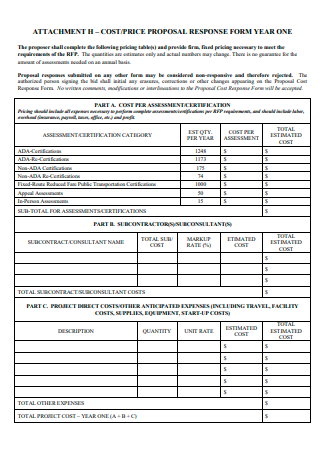
Cost Proposal Response Form
download now -
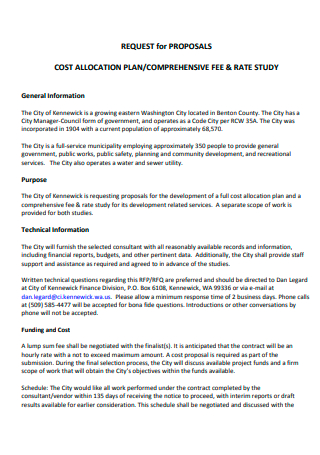
Cost Allocation Plan Proposal
download now -
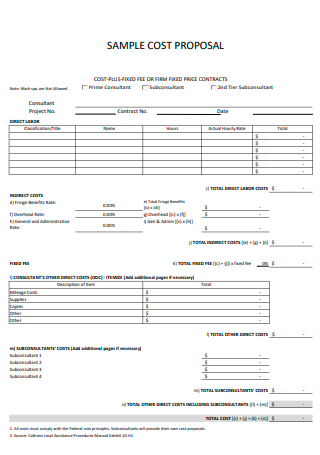
Sample Cost Proposal
download now -
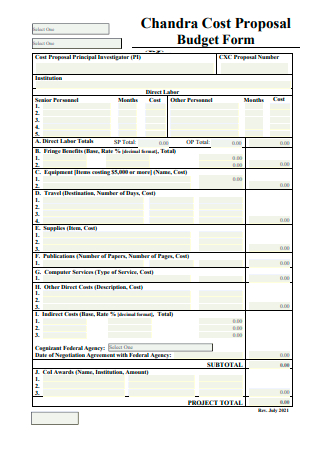
Cost Proposal Budget Form
download now -
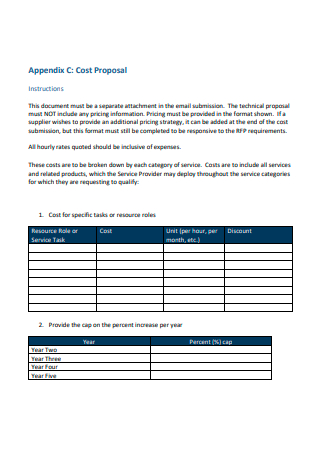
Formal Cost Proposal
download now -
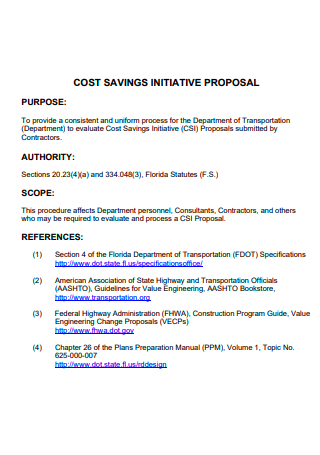
Cost Savings Initiative Proposal
download now -
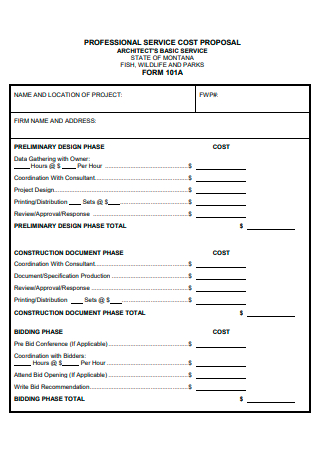
Professional Service Cost Proposal
download now -
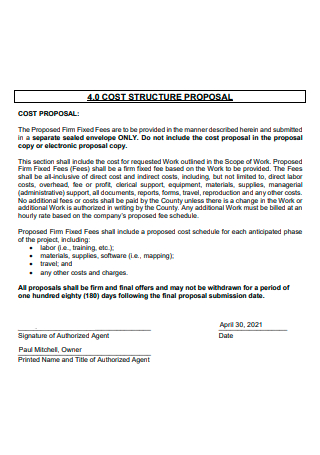
Cost Structure Proposal
download now -
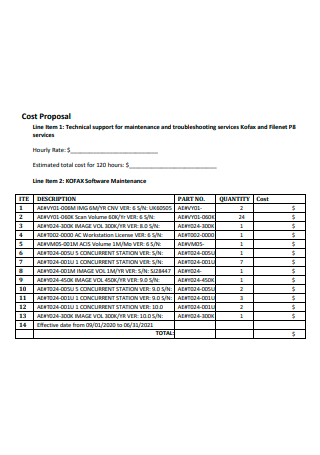
Standard Cost Proposal
download now -
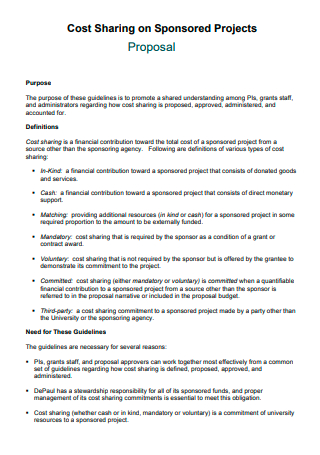
Cost Sharing on Sponsored Projects Proposal
download now -

Request For Qualifications and Cost Proposal
download now -
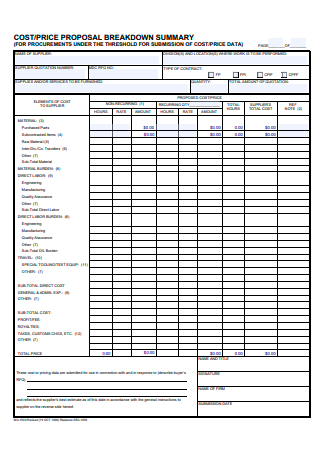
Cost Proposal Breakdown Summary
download now -
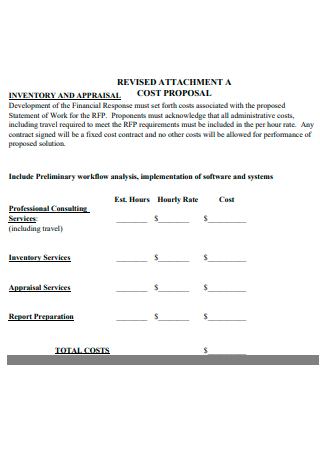
Simple Cost Proposal
download now -
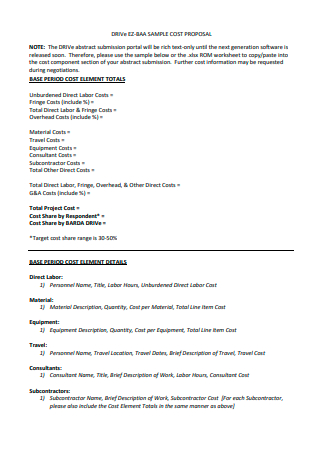
Drive Cost Proposal
download now -
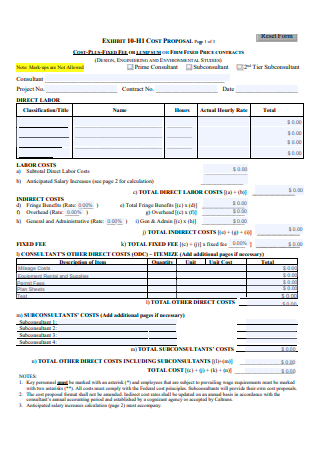
Printable Cost Proposal
download now -
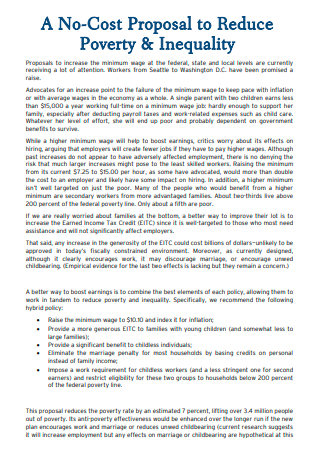
No Cost Proposal to Reduce Poverty and Inequality
download now -

Cost Subcontract Pricing Proposal
download now -
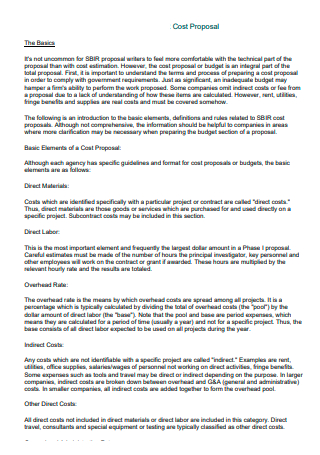
Cost Proposal Example
download now -

Cost and Price Proposal
download now -
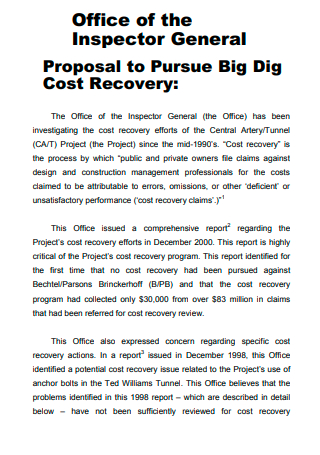
Cost Recovery Proposal
download now -
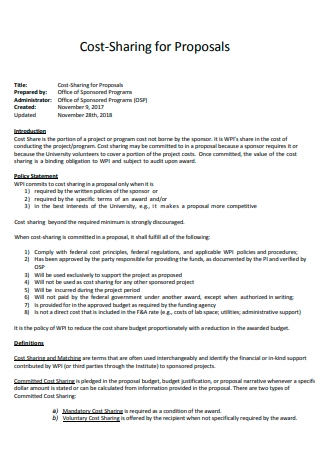
Cost Sharing For Proposal
download now -
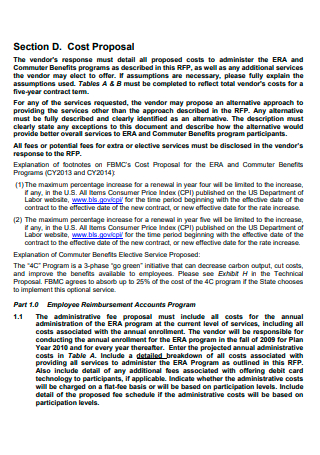
Draft Cost Proposal
download now -
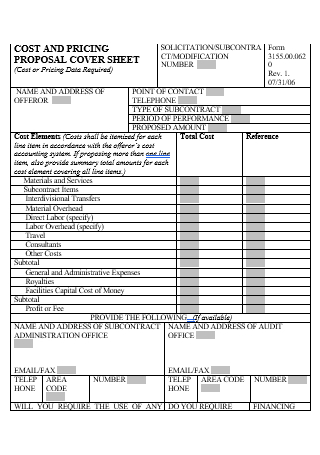
Cost and Pricing Proposal Cover Sheet
download now -
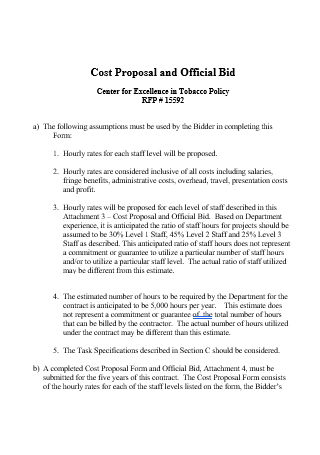
Cost Proposal and Official Bid
download now -
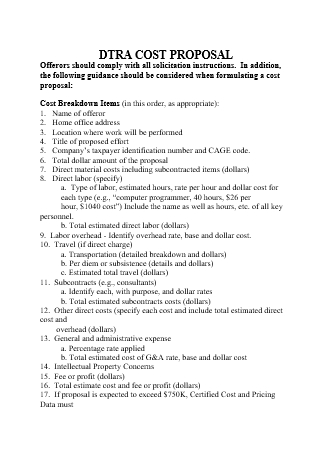
Cost Proposal in DOC
download now
FREE Cost Proposal s to Download
40+ Sample Cost Proposal
a Cost Proposal?
Benefits of Project Cost Control
Warning Signs of an Excessive Cost Proposal
How To Create a Cost Proposal
FAQs
What is the format of a proposal?
How effective are proposals?
What characteristics define an influential proposal writer?
What makes a proposition successful?
What Is a Cost Proposal?
A cost proposal is a document that contains comprehensive and detailed information about the costs associated with a project. It is a critical business document included in all project proposals. This sort of proposal form encompasses a wide range of information in a business proposal, most notable compensation for services and the cost of equipment and services. Cost proposals must be written professionally and organized, as they will function as the project’s budget. Also, a cost proposal is subjected to cost analysis to assess the accuracy of the following information. According to statistics, proposal costs typically range between 3% and 5% of the contract’s value.
Benefits of Project Cost Control
Consider the devastation that would occur if you decided to embark on a project without first budgeting and managing your time and expenses. For instance, suppose you calculate that the duration of your next building project will be four weeks. The first phase goes successfully, but the second phase encounters supplier problems. You can locate another supplier, but it will take two weeks and result in a 10% rise in supply costs. Then, if your project lead is wounded on the job, you must replace them with another authority which must be brought up to speed on the project, which takes another week. Utilizing project cost control would not have avoided any harmful events. However, if cost management and cost control methods were correctly established from the outset, you would be equipped to deal with these and other challenges that frequently arise during a project.
Warning Signs of an Excessive Cost Proposal
Prioritizing engineering costs over quality might increase total project costs and reduce the value received. While we strongly advocate for a quality-based selection process when hiring consultants for these reasons, if cost is still an issue, it’s critical to know the warning flags. The following section discusses five red flags associated with cost proposals. Specifically, indications that the services offered by an A/E firm may not be feasible or might be practicable only at the expense of the quality received. Being aware takes you one step closer to knowing that you are receiving an acceptable value!
-
1. You receive an offer that is much less than or more than the market average.
When project owners frequently ask for cost quotes, they receive one extremely expensive and one shallow offer, along with several very near one another. We often advise our clients to immediately reject outlandishly high and cheap priced options. This typically indicates that organizations did not thoroughly examine your project’s scope or lack the essential project knowledge necessary to piece together an accurate estimate. High-priced offerings may have contained optional or extra services. They are most likely offering this offer for the cheapest bids to pique your interest. If you’re opposed to rejecting any requests, at the very least, unusually low bids warrant close consideration. They may indicate inexperienced team members, omitted services, or a misperception of the scope. Have you conducted an in-depth examination of the team’s experience submitting the lowest-cost proposal? Have you compared this idea to others more representative of the mean? High and low bids may also indicate that your RFP or solicitation is missing critical information. Have you provided a comprehensive scope of work? Have you arranged a pre-proposal meeting to provide clarification if a large number of queries have been filed or if consultants have contacted you with questions?
2. Price components vary according to the extent of work.
Competing organizations will often quote services entirely irrelevant to your work area. This is frequently a red flag that the consultant does not grasp your scope or did not take the time to thoroughly investigate your project’s details. Have other consultants included comparable costs/suggestions, or is the plan you’re contemplating the only one with a low/high price? Suggestions for adjustments or additions to your scope can be an effective value-added service. Still, the firm must demonstrate quantifiable proof without jeopardizing or compromising your original content.
3. Wishful thinking trumps practical and objective reasoning.
The proposals you receive will always vary; each consultant’s experience, design alternatives, and approach will be unique. However, it is critical to distinguish between practical and realistic thinking and wishful thinking. If an A/E firm claims more services, value, and hours than any other firm at a significantly lower price than any other firm, the offer may be too good to be true. If a consultant makes lofty value-added service promises, can they articulate the impact on your project and demonstrate that they can be delivered?
4. The number of hours varies widely amongst consultants.
Examine the number of hours submitted by each firm for your assignment. As with total cost, something is amiss if most A/E consultants fit into a particular tier while one or two work much more/fewer hours. This could indicate a lack of effort in scope evaluation or a low-ball offer that lacks rigorous planning/foresight and cannot be fulfilled without large modification orders. This warning flag is one of the reasons project owners are increasingly opting for lump sum contracts rather than hourly fees. As long as your scope is well-defined, lump-sum contracts help prevent scope creep. Lump-sum contracts further increase the risk/liability of the A/E consultant, as scoped services that exceed budget become their contractual duty.
5. Reusing an existing scope of work or request for qualifications
While the previous four signals refer to the efforts of A/E consultants, sign number five encourages you to examine your area of work thoroughly. It is not common for project owners to reuse or repurpose project scopes or request quotations (RFQs) when asking for bids to save time. Generic or non-customized contents of work and requests for proposals (RFPs) might result in very erroneous cost estimates. Additionally, they can result in a high volume of change orders during the design and construction phases. This often results in missed budgets, extended timetables, and other unanticipated expenses.
How To Create a Cost Proposal
Cost proposals are critical components of any project plan since they assist in establishing a project’s feasibility. That is why it must be well-written and succinctly convey crucial and pertinent information. According to a Medium article, crafting a solid and persuasive proposal for various uses has the potential to close 80 percent or more of the deal. Therefore, if you’re unsure how to construct a realistic cost proposal for a suggested project, you might as well follow the straightforward instructions below. This is how.
-
1. Determine the Cost Proposal’s Audience
Before developing a realistic pricing proposal, you must first research and identify the right individuals to read your proposal. Presenting an excellent proposal does not guarantee you will receive a contract if you do not include your readers’ information. As a result, it is critical to examine and reflect the essential information to please your readers. Simply put, write the figures and words that are significant.
2. Determine the Cost Proposal’s Purpose
After determining who will see your cost proposal document, the next step is to highlight your aim. In this situation, you may write an introduction—a summary of the cost proposal sheet’s fundamental concept. Ascertain that the text’s primary purpose is to present your readers with clear and correct knowledge.
3. Create a Cost Proposal Outline and Incorporate Labels into the Cost Proposal
After you’ve written the introduction to your cost proposal, you’re ready to write the proposal outline. Columns and rows will be put to good use in this manner. However, ensure that your table is large enough to handle significant amounts of data so that you can include all relevant information in your proposal. Additionally, once your cost proposal framework is complete, the next step is to add labels. These will act as markers and guidelines for the type of information entered in each row. Nonetheless, the tags you use in your cost proposal company document should reflect your general purpose.
4. Include Fundamental Information in the Cost Proposal
Complete your cost proposal document format by including basic information about it, such as the date and time, the request for proposal (RFP) number, the offeror’s name, and contact information. Additionally, a brief description of the project is required—the project’s name, location, and duration. End your cost proposal with a statement attesting to the accuracy of the data contained in the proposal. After that, include a space for signatures.
FAQs
What is the format of a proposal?
As you can see, a proposal typically has a brief description of the problem, solution, expenses, and benefits in the introduction. Subject, purpose, primary argument, background information, and importance are all part of the issue’s primary definition.
How effective are proposals?
Generally, most proposals have the following components: Synopsis: This justifies the plan’s implementation and summarizes the proposal. Needs Statement: Details on why the proposal’s recommended project is necessary.
What characteristics define an influential proposal writer?
An intelligent proposal writer will initiate conversation and follow up on requests. Similarly, an excellent proposal writer is easy to contact. While they may not always answer the phone when you call – nobody likes interruptions while in the “writing zone” – they will return your call as quickly as possible.
What makes a proposition successful?
A well-written proposal summarizes each sales cycle stage and briefly describes how a particular product or service will address an identified need. Your proposal should serve as a reminder to prospective clients of their troubles and the reason they began looking for a solution in the first place.
A cost proposal assists businesses in determining the project’s total cost—service fees and supplies required. Additionally, it enables them to define the scope of work, assess the tasks that must be completed, analyzes the standard guide for performing each activity, the timeline, and identify extra services, among other things. That is why, before constructing a project, it is critical to have cost proposals attached to the business or project proposal. Therefore, when developing a pricing proposal, ensure that you include all necessary information to make the document valuable and professional. You may peruse the example cost proposal templates supplied above.
